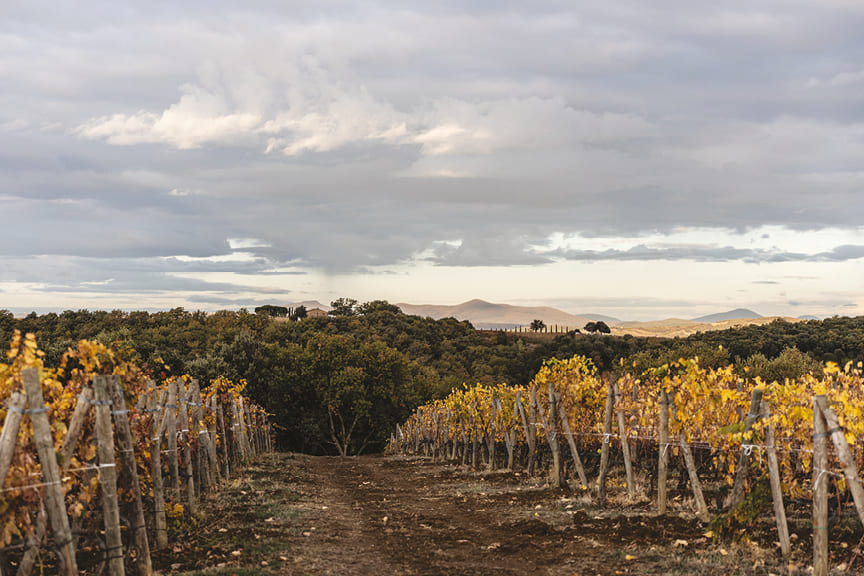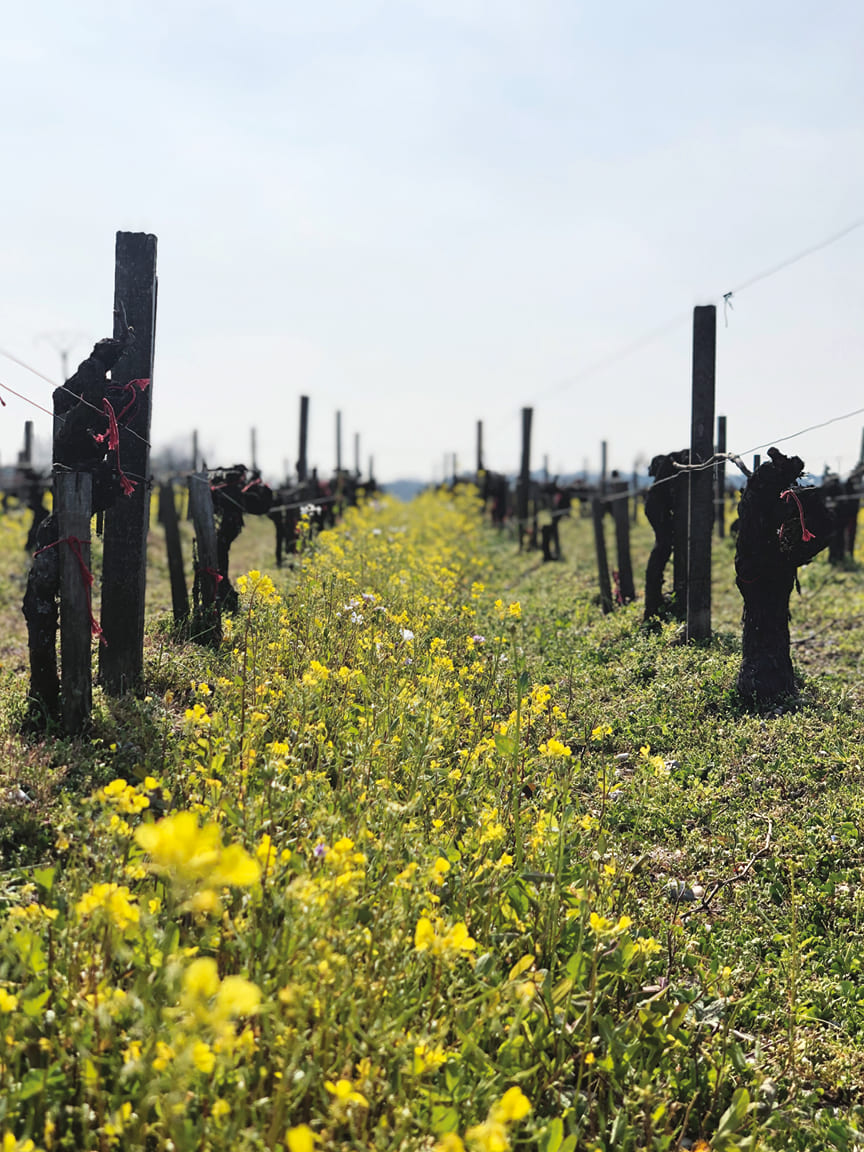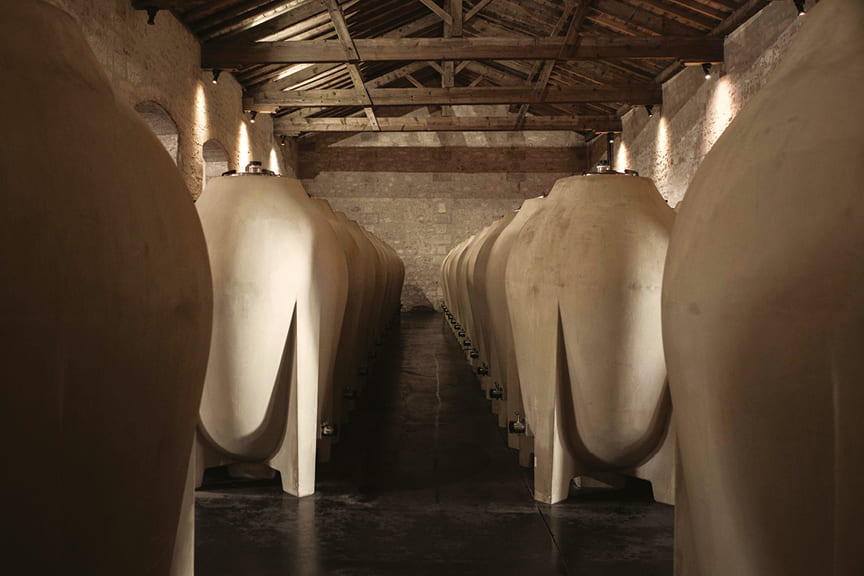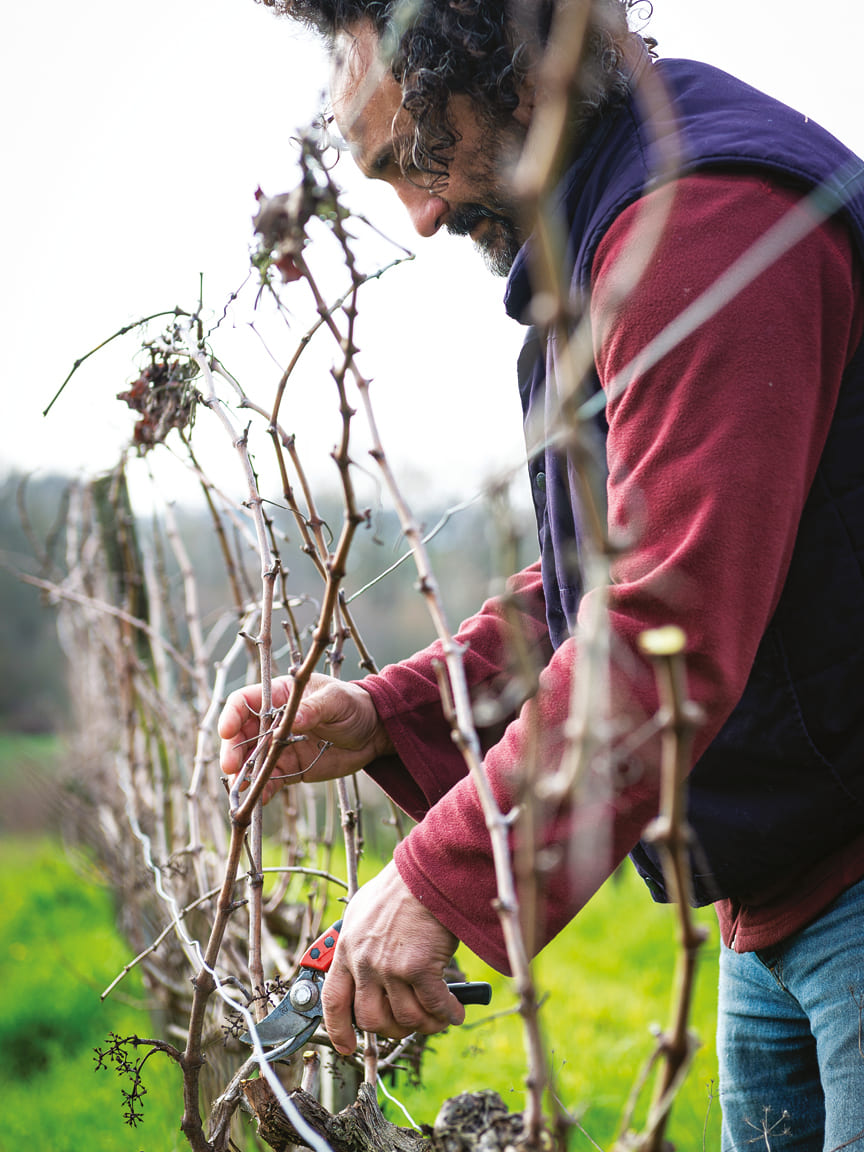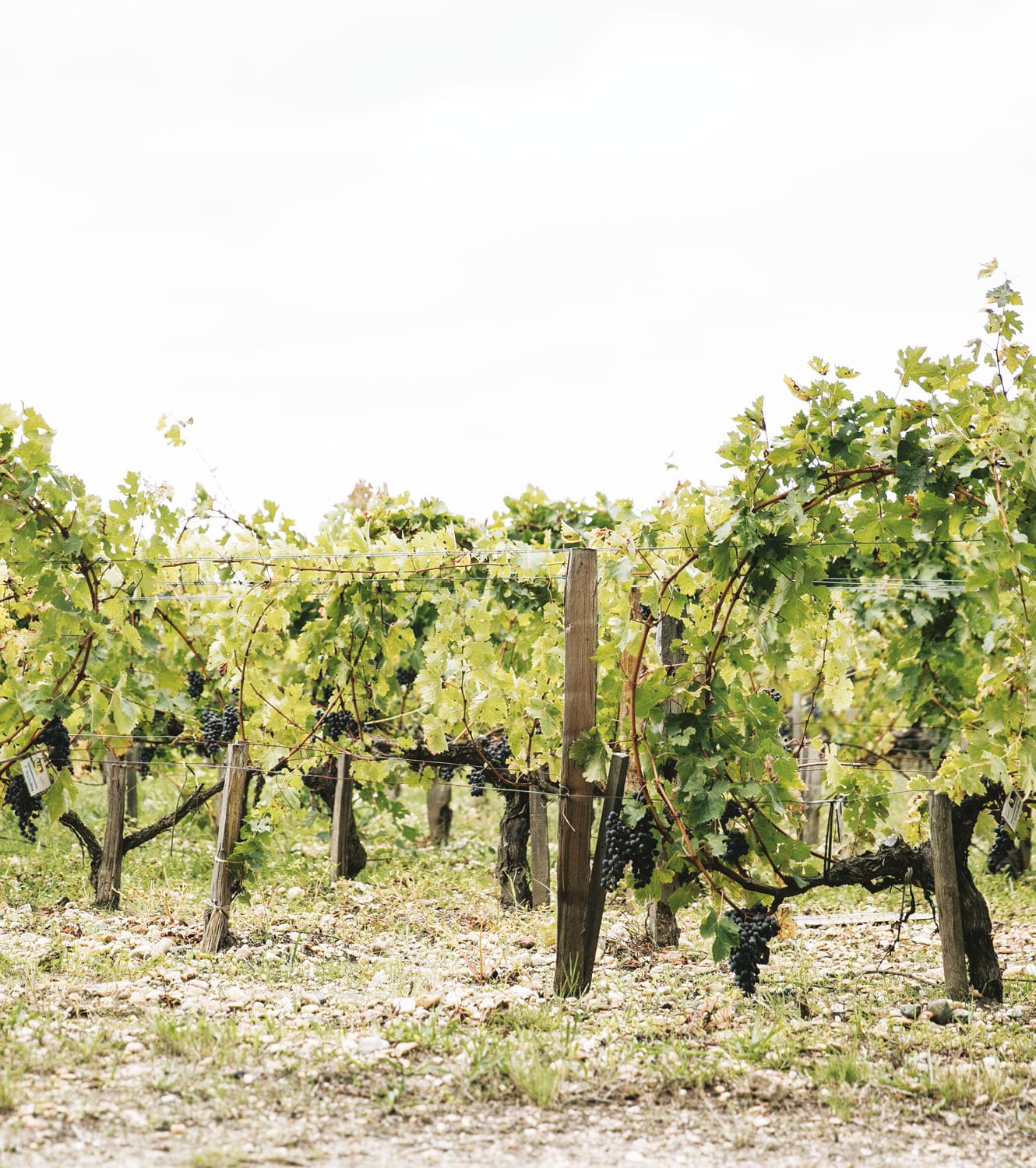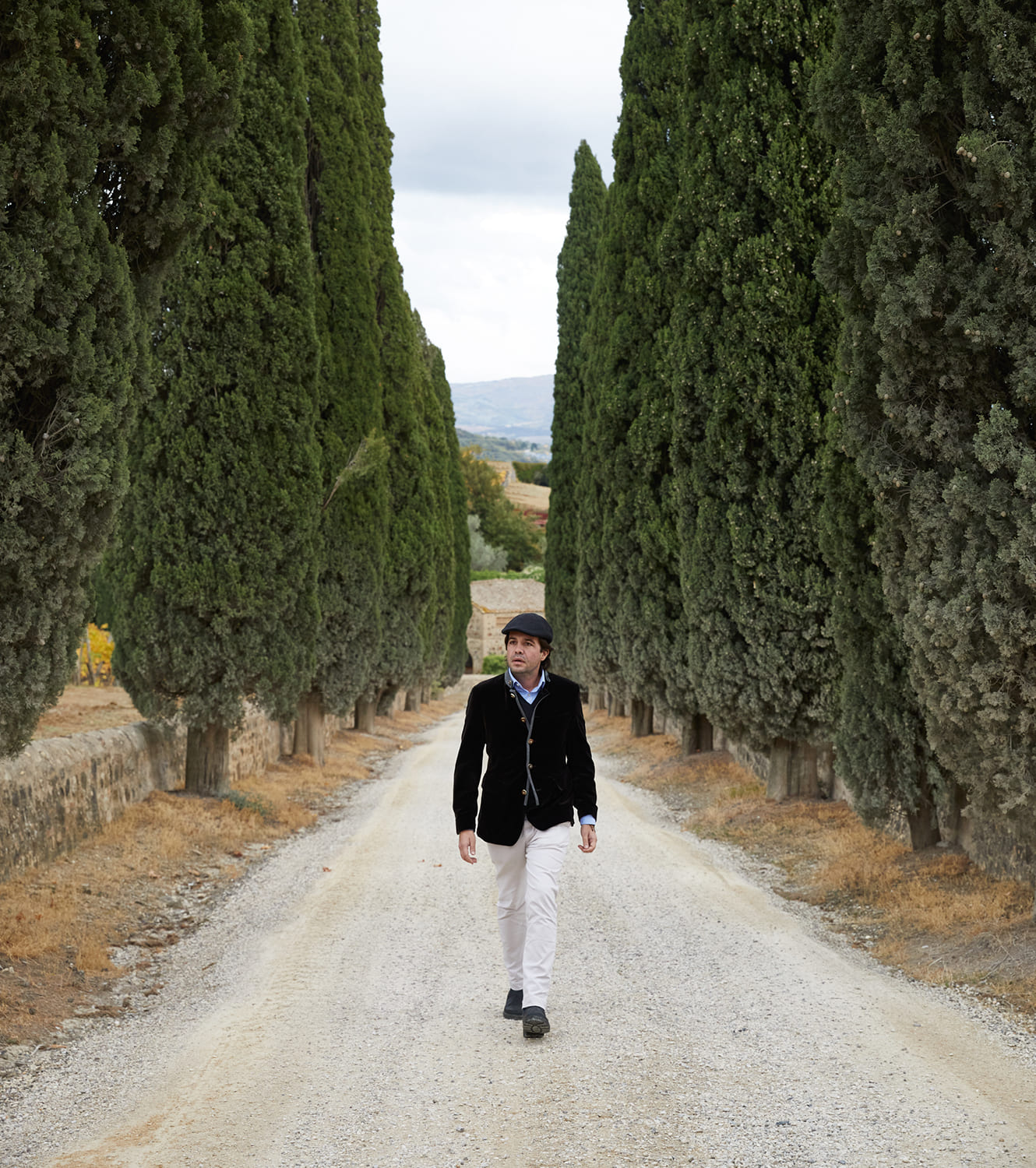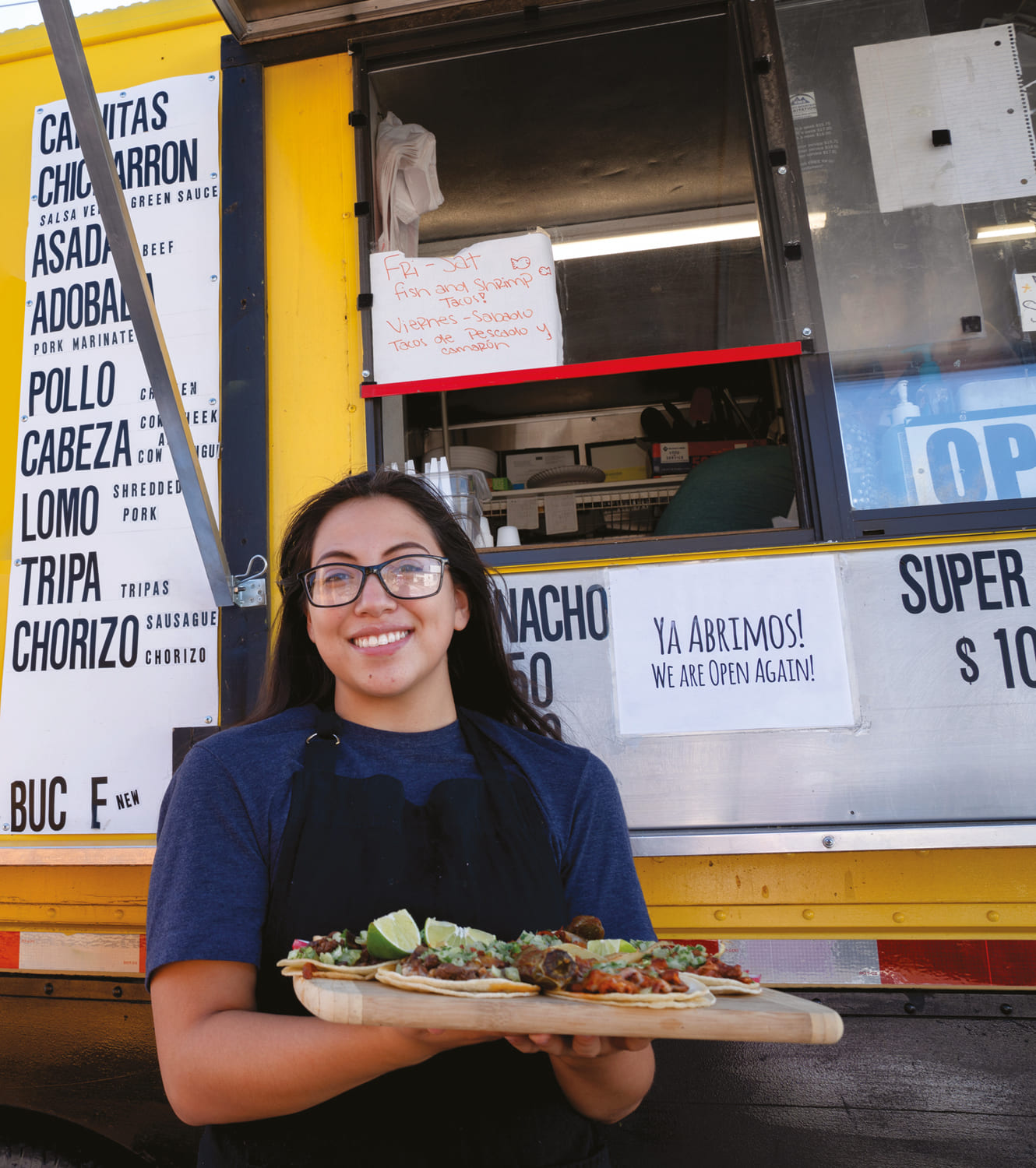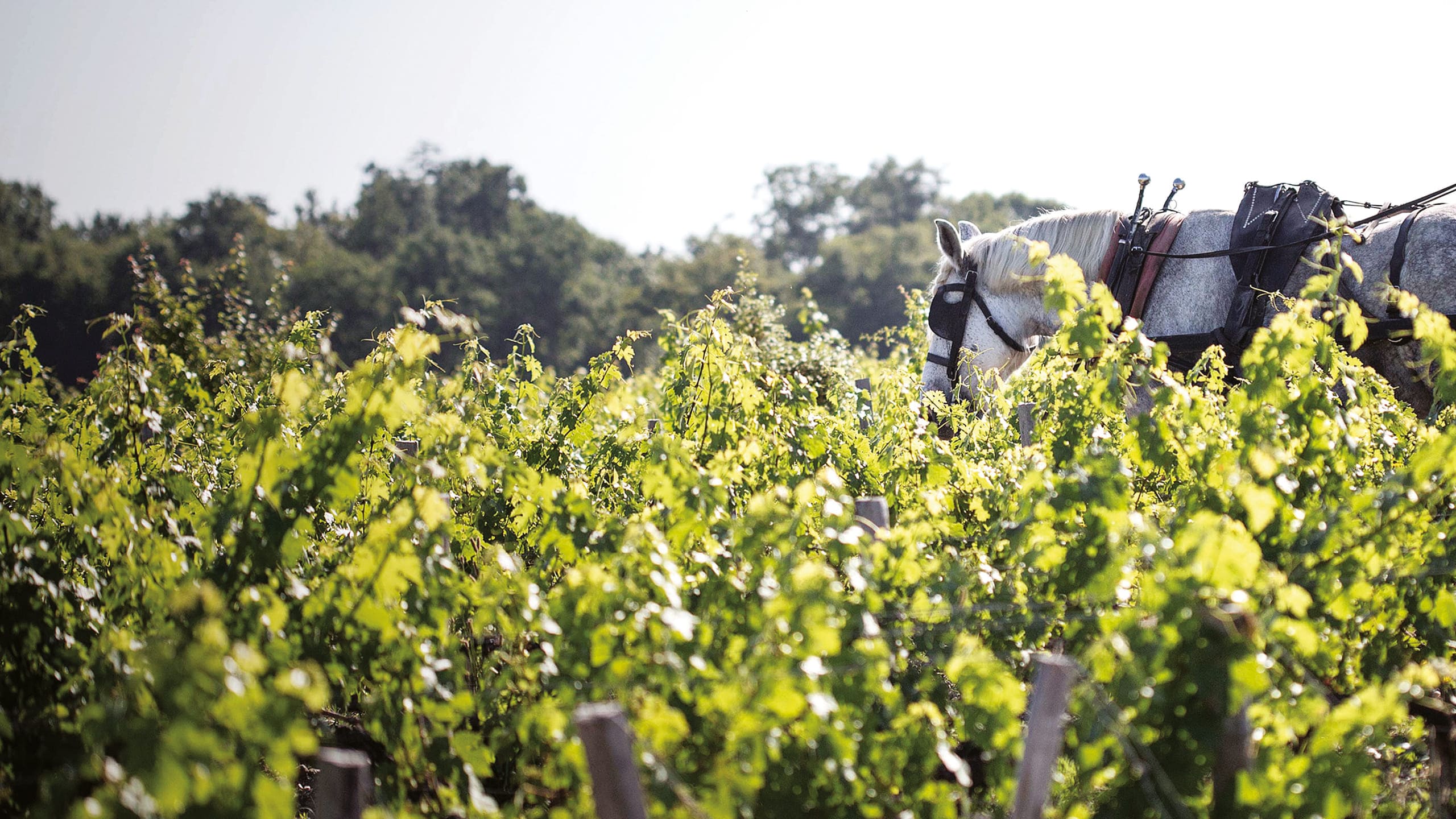
GOING GREEN
As wine consumers seek greener products, Pam Strayer explains eco-certified wines and what makes them unique
From Hummers and Teslas to coal and solar, industries across the globe are finding a new, green future, and moving towards it at warp speed. The same in the wine world. Not long ago, wine was simply red, white or rose. But today, new eco-wine categories — organic, regenerative organic and biodynamic — have exploded as more producers farm without synthetic chemicals, preserving their soil’s health and getting the best expression of terroir in their wines.
Growing good grapes is a lot of work. Even in fine-wine regions, conventional and sustainable growers use heaps of synthetic fertilizers and vineyard chemicals — herbicides, insecticides and fungicides. To be organic or biodynamic, growers must pursue a purer path, using rigorous prevention practises and gentler materials.
Organic and biodynamic wine-grape growers farm without synthetic chemicals. That sounds relatively simple, yet it’s anything but. By restricting the use of synthetics, whether they are substances with low health impacts to chemicals of graver concern, growers must switch to different methods from the start, beginning with fertilizers.
Organic and biodynamic vineyards use only (and often homemade) organic fertilizers or compost, whereas conventional fertilizers will undergo intensive manufacturing processes requiring considerable amounts of carbon. There are other ways to increase soil productivity naturally. Cover crops — the plants in between vine rows — aid in fertility by providing nutrition for the soils. Farmers will often rotate out the rows or plough them under every couple of years, or mow them, using the clippings as mulch, providing valuable soil protection and cover.
Much like our own diets, the choice of which cover crops to use depends on the vineyard, since there are different goals in different terroirs. Some vineyard managers guard their proprietary mixes, while eco-growers use native perennials, which naturally reseed each year.
Weed control is another challenge. Conventional growers use herbicides, which are based on glyphosate. Growers use herbicides in the winter and spring to kill weeds. Some fine-wine producers are reducing herbicide use, but they are still fairly ubiquitous.
Their tell-tale yellow strips of dead weeds on vineyard floors are obvious to passers-by. The herbicides can also kill healthy beneficials in the soil. Other deadly herbicides include paraquat, which is used on 13 percent of California vineyards, but not in fine wine regions like Napa and Sonoma.
Cover crops can aid in weed control, with beneficial plantings outcompeting weeds in the vine rows. Organic growers also use special under-vine cultivators that mow just the narrow strip under the vines. Growers may also use sheep to eat weeds and fertilize the soil, tamping natural nutrition into the ground with their hooves.
Fungal diseases are a threat in many vineyards, showing up as mildews, rots and blights and spreading from vine to vine. In the US, while conventional wine growers commonly use synthetic fungicides, eco-certified growers have to find a way to combat fungal diseases naturally. While both conventional and organic growers use fungicides containing copper, many rely more on popular bio-fungicides, including Sonata and Regalia, which are approved by the United States Department of Agriculture’s National Organic Program. Currently, research is underway to study plant-based solutions, searching for organisms that could naturally remove copper from soils.
Mastering the eco alphabet soup
Organic is a materials-based, legal standard that requires growers to use only approved substances and submit to annual certified inspections. In the US, that is the USDA’s National Organic Program (NOP), which creates regulations overseen by certifiers it approves. The most common of these in wine are California Certified Organic Farmer (CCOF) and Oregon Tilth. Farmers who practice organic agriculture see that it returns life to their vineyards. The organic conversion process takes three years before a grower can be certified. Meanwhile, organic wine production can cover the vines alone, or the vines and the wines.
Biodynamics is the oldest organic standard, based on a more holistic approach that integrates the use of herbal and mineral sprays, and teas into grape growing. The Austrian Rudolf Steiner is believed to be the catalyst for the biodynamic movement’s origins in 1924, but it was his student Ehrenfried Pfeiffer, a soil scientist, who went on to name and to lead the biodynamic movement for decades, supported by a global community of farmers who made its practices public with the publication of the 1938 book “Bio-Dynamic Farming and Gardening”.
Sometimes referred to as “organic plus,” biodynamic producers must be certified organic as a baseline and go beyond a materials-only standard to an ecosystem approach. The required sprays it prescribes enhance the microbial life in the soil and plant health, promote better resilience during drought and rising temperatures and, in many cases, improve flavors.
In the US, biodynamic certification also has a biodiversity component, requiring growers to set aside at least 10 percent of their land to be wild. Another key component is the emphasis on polyculture and integrating animals and birds in the ecosystem. For instance, chickens, ducks and geese may eat the weeds on the vineyard floor, providing fertilizer as they graze.
Many producers say soil health and vine quality are the main reasons they become biodynamic. Prestigious wineries such as Château Pontet-Canet in Bordeaux, Domaine Romanée-Conti in Burgundy, and Eisele Vineyard in Calistoga are among the most famous biodynamic producers. But there are also widely available biodynamic wines at more affordable prices to include such producers as Emiliana in Chile and Cantina Orsogna in Italy.
In Bordeaux, the husband-and-wife team of Gonzague Lurton and Claire Villars Lurton own four biodynamic estates — three are classified growths — and emphasize that although they are certified biodynamic, they provide more than the required baseline. “Certification is an essential step in avoiding all chemical products,” Villars Lurton says. “But we have to go ahead in biodiversity, in cover crops, planting hedges and trees in the blocks of vines to reintroduce birds, small animals, microfauna, microflora and mycorrhizal life.”
She stresses the importance of soil microbacterial life. “It allows vines to assimilate nutrients and make the connection between plants [and] trees,” she says. “In biodynamics, vines must be connected with their soil in order to make more complete grapes and wine, expressing their terroir. They are the internet of the soil.”
Increasingly, winemakers and soil scientists are focused on exploring in greater detail the life of microbial soil life, using state of the art research technology — from studying six foot deep soil pits (observed and precisely measured annually over decades) to fancy fMRI analysis — to learn more about this rapidly expanding scientific frontier. But for winemakers and wine consumers, it can simply be a matter of developing a taste for eco-friendlier wines.
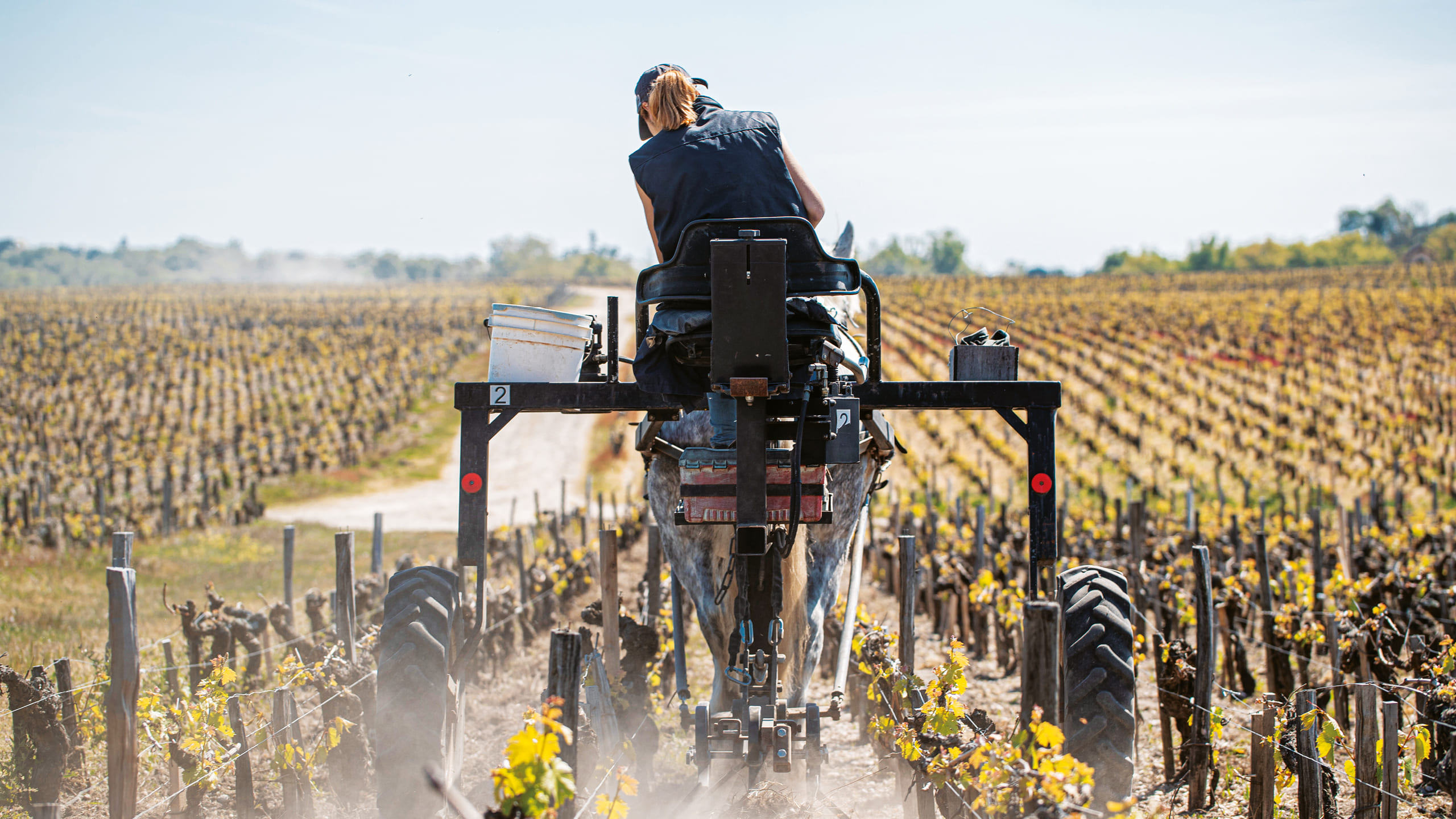
At Château Pontet-Canet in Bordeaux, horses improve biodiversity
Photography Château Pontet-Canet ©Benjamin Deroche, Julie Rey, Joanna Margan. Château Haut Bages Liberal ©Gautier Dufau. Argiano ©Leigh Banks, Helen Cathcart
We recommend
BORDEAUX’S VINEYARDS ARE PUSHING TO BE MORE ECOLOGICAL
Pam Strayer visits one of France’s oldest wine regions to understand its latest efforts to satisfy consumers’ thirst for organically grown wines
ARGIANO’S POSITIVE TWIST
Listening intently to the land, fastidious soil mapping and a scholarly approach to viticulture, has earned the oldest Montalcino winery’s Brunello, red wine of the year. Nargess Banks visits the Tuscan estate to learn more
Taking the natural course
A former fashion executive, Whitney Pope is now Washington DC-based sommelier and founder of Whit + Wine. Here, she discusses her journey from fashion to fermenting , and why there is a natural space for natural wine
FOOD TRUCKS AND WORLD CUISINE CAN LEAD TO DIVERSE WINE PAIRINGS
From London to Lisbon, New York to LA, food trucks have altered the culinary landscape. Katie Kelly Bell asks sommeliers how best to pair world street food with wine

